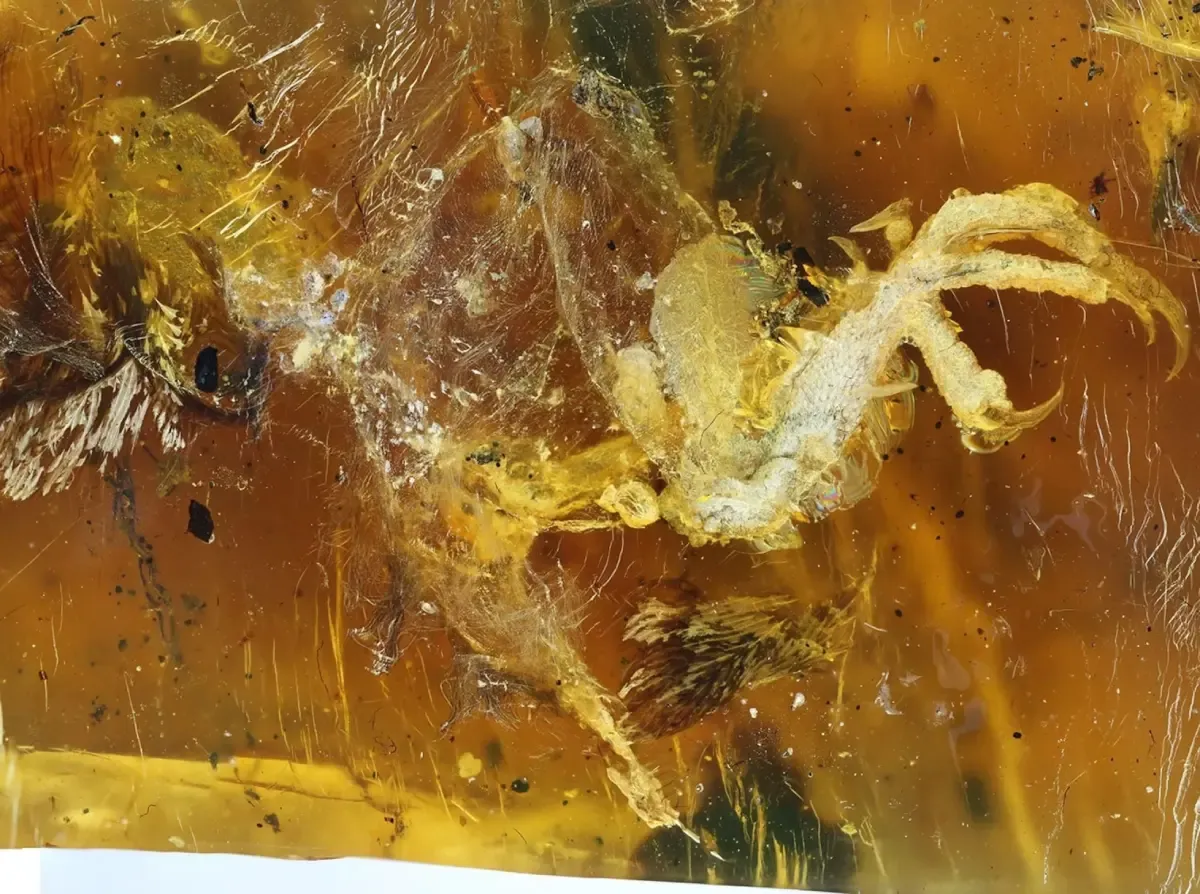Amber Preserves Feathers of Immature Enantiornithine Bird Found
99-Million-Year-Old Burmese Amber Preserves Feathers of Immature Enantiornithine Bird
The Discovery of Ancient Bird Feathers in Amber
The discovery of ancient bird feathers in amber is a significant event in the field of paleontology. The feathers were found in a piece of amber from the Hukawng Valley in Kachin Province in northeastern Myanmar. The amber is about 99 million years old, making it the oldest known evidence of bird feathers.
The feathers are thought to belong to an enantiornithine bird, a group of birds that were common during the Cretaceous period. Enantiornithines were a diverse group of birds, and they included both small and large species. They were also the first birds to develop feathers with vanes, which are the branching structures that give feathers their aerodynamic properties.
The feathers in the amber show clear evidence of juvenile molting. This is the first definitive fossil evidence of juvenile molting in the Mesozoic fossil record. Molting is the process by which birds shed their old feathers and grow new ones. It is an important part of bird growth and development.
 |
| Tree resin trapped this baby bird 99 million years ago. Lida Xing |
The discovery of these feathers is significant because it provides new insights into the evolution of birds. It suggests that the ability to molt rapidly may have been an important adaptation that helped birds to survive the mass extinction at the end of the Cretaceous period. The mass extinction wiped out about 75% of all plant and animal species on Earth, including many birds. However, some birds, such as enantiornithines, were able to survive the extinction event. This may have been due to their ability to molt rapidly and adapt to new environments.
The discovery of these feathers also raises questions about the evolution of feathers. Feathers are thought to have evolved from scales, and the earliest known feathers were simple, hair-like structures. The feathers in the amber are more complex, with vanes and barbs. This suggests that feathers may have evolved more rapidly than previously thought.
The discovery of ancient bird feathers in amber is a significant event that has the potential to revolutionize our understanding of bird evolution. It provides new insights into the evolution of feathers and the ability of birds to survive mass extinction events.
Enantiornithines were doomed because the infant bird needed to stay warm while simultaneously going through a rapid molting phase – with no support at hand.
“When the asteroid hit, global temperatures would have plummeted and resources would have become scarce, so not only would these birds have even higher energy demands to stay warm, but they didn’t have the resources to meet them,” noted O’Connor.
Enantiornithines are thought to be one of the most diversified families of birds to live during the Cretaceous period. These birds, just like the mighty dinosaurs, were unable to withstand the conditions of the asteroid's impact and eventually went extinct. However, some ancestors of modern birds that molted once a year could have survived this massive asteroid impact. And this paved the way for the evolution of birds that we see today, like robins, pigeons, and many others.
The findings have been published in the journals Cretaceous Research and Communications Biology.








